Top speed 563 km/h Length 30 m First flight December 2, 1945 | Wingspan 34 m Introduced 6 August 1950 | |
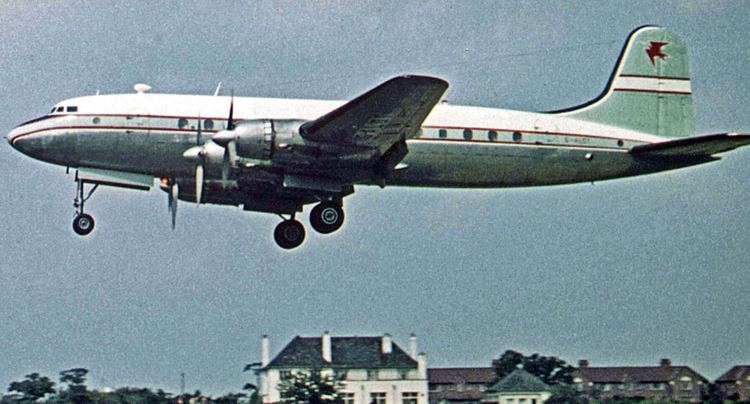 | ||
Very rare handley page hermes only one survivor in the world
The Handley Page HP.81 Hermes was a British civilian airliner built by Handley Page in the 1940s and 1950s. Closely related to Handley Page's Hastings military transport, the Hermes was a low-wing monoplane powered by four piston engines. Twenty-nine were built, serving briefly with BOAC in the early 1950s and later with several charter airlines.
Contents
- Very rare handley page hermes only one survivor in the world
- Design and development
- Airline operations
- Development aircraft
- Variants
- Operators
- Accidents and incidents
- Specifications Hermes IV
- References
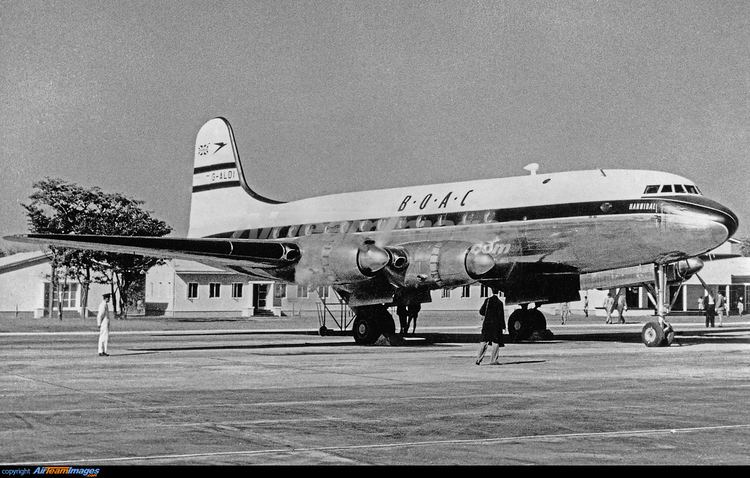
Design and development
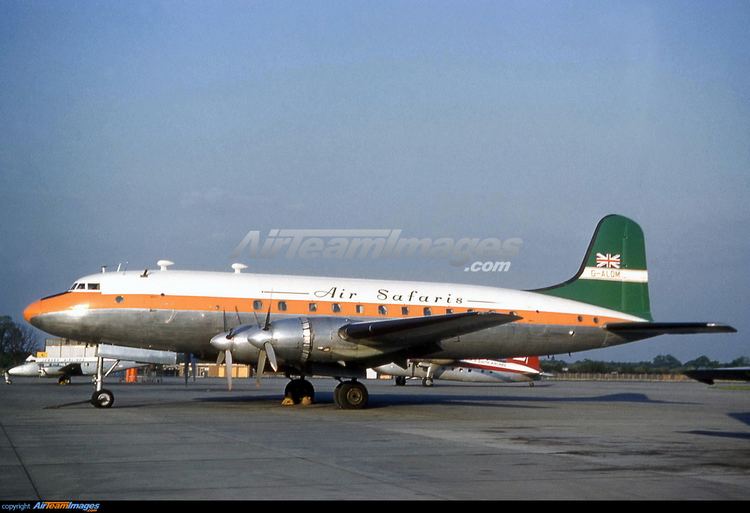
The Hermes was built to meet the 1944 Air Ministry specification for a pressurised civil transport capable of carrying 34 first-class or 50 tourist-class passengers, at the same time as the RAF required a new transport to replace its Handley Page Halifax, for which Handley Page designed the very similar Handley Page Hastings. Unlike the tailwheel Hastings, the Hermes was planned to have a nosewheel undercarriage, although the first two prototypes used a tailwheel undercarriage, of which the first was an unpressurised "bare shell" and the second to be pressurised and fully equipped. It was intended to introduce the Hermes before the Hastings, but production was delayed after the first prototype (HP 68 Hermes 1), registered G-AGSS crashed on its maiden flight shortly after takeoff on 2 December 1945. Handley Page's chief test pilot and the chief test observer were both killed. Development of the civil Hermes was delayed to resolve the instability that caused the accident to the first prototype, and the chance was taken to lengthen the second prototype, producing the HP 74 Hermes II (G-AGUB), first flying on 2 September 1947.
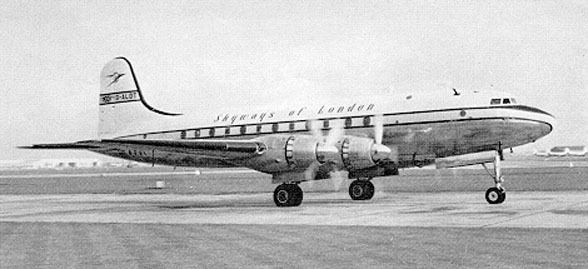
Meanwhile, orders were placed on 4 February 1947 for 25 of the definitive HP 81 Hermes IV, fitted with a tricycle undercarriage and powered by 2,100 hp (1,570 kW) Bristol Hercules 763 engines, for BOAC and two HP Hermes V, powered by the Bristol Theseus turboprop engines.
Airline operations
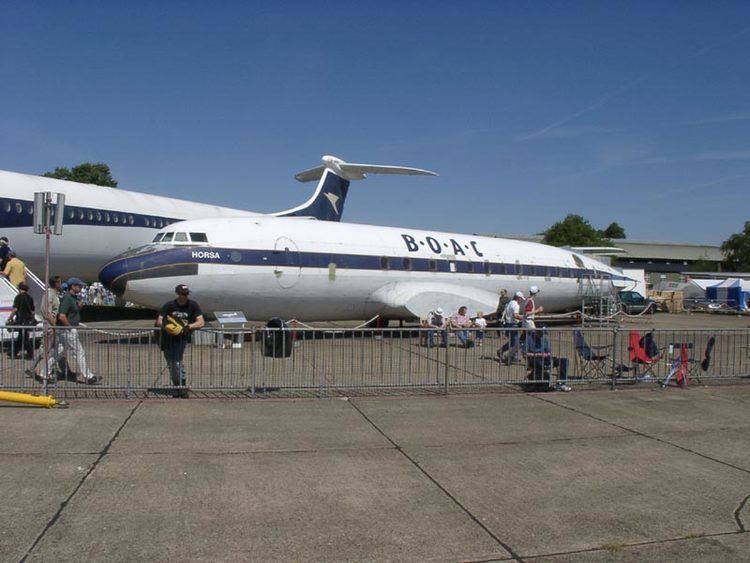
While the first Hermes IV (registered G-AKFP) flew on 5 September 1948, and production built up quickly, the early aircraft were overweight, partly due to the use of Hastings components, and were initially rejected by BOAC.
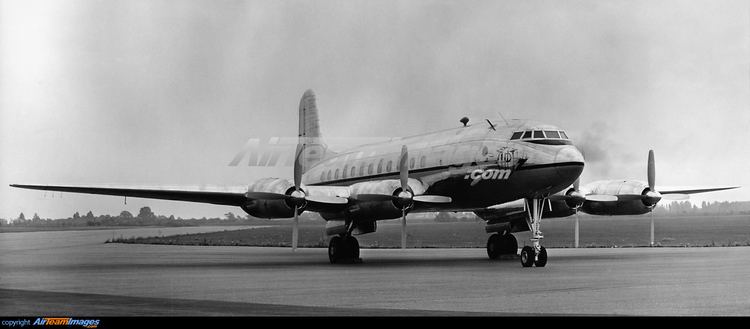
The Hermes IV finally entered service with BOAC on 6 August 1950, taking over from the Avro York on the West Africa service from London Heathrow to Accra via Tripoli, Kano and Lagos, with services to Kenya and South Africa commencing before the end of the year. The Hermes IV was used by BOAC on routes to West and South Africa. They were quickly replaced, however by the reliable Canadair Argonaut in 1952, although some re-entered service in July 1954 following the grounding of the de Havilland Comet, being retired again in December.
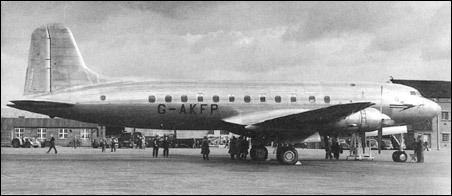
This was not the end of the Hermes in airline service, however, as surplus aircraft were sold to independent charter airlines, with Airwork purchasing four in 1952, others being operated by Britavia and Skyways, particularly in the trooping role. Many of these aircraft were fitted with Hercules 773 engines which could run on lower octane fuel than the original Hercules 763s, being designated as Hermes IVA, returning to Hermes IV standards when fuel supplies improved.
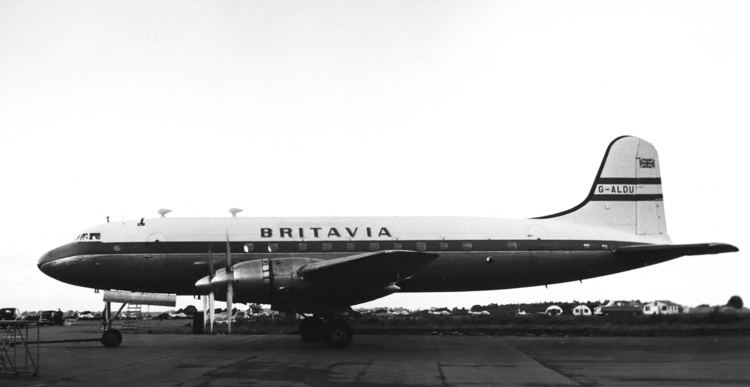
Later, the Hermes were flown on inclusive tour holiday flights from the UK. The last Hermes, G-ALDA, flown by Air Links Limited, was retired on 13 December 1964, and was scrapped nine days later.
Development aircraft
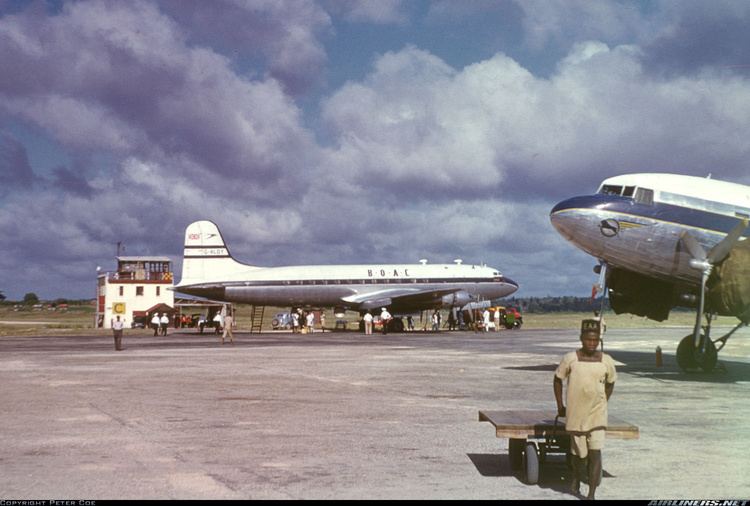
The two turboprop Hermes V were owned by the Ministry of Supply and made their first flights in August 1949. They were used for development of the Bristol Theseus turboprop engine. The first was lost in a wheels-up landing at Chilbolton airfield on 10 April 1951, but the second continued development flying with the A&AEE at Boscombe Down and the RAE at Farnborough until retirement in September 1953. The prototype Hermes II was given military markings in October 1953 as VX234 and was used for various research and development programmes, including the testing of airborne radar for the Royal Radar Establishment at RAF Defford, Worcestershire, being finally retired in 1969, the last of the Hermes.
The fuselage of a Hermes IV (the former BOAC aircraft G-ALDG named Horsa) is preserved at the Imperial War Museum Duxford.
Variants
All 29 aircraft were built at Radlett Aerodrome, Hertfordshire, England.
Operators
Accidents and incidents
Specifications (Hermes IV)
Data from The Encyclopedia of World Aircraft.
General characteristics
Performance
